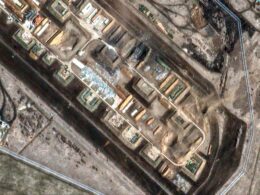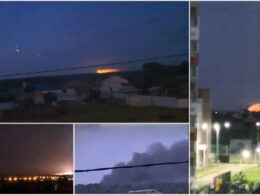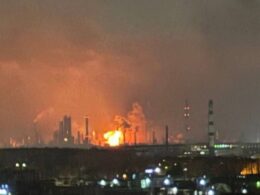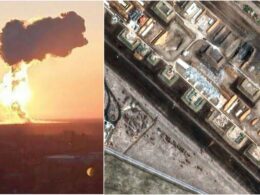Forbes reports on the strategic pattern behind Ukraine's recent drone strikes against Russian military infrastructure, analyzing the 19 January 2025 attack on the Kazan Aircraft Plant alongside previous operations.
According to Forbes' analysis, the strikes against the Kazan facility on 20 January, located around 1,000 kilometers from Ukraine, represent part of a systematic campaign targeting Russian bomber support infrastructure. Forbes notes that Russian Telegram users reported
drones overhead during the night, followed by explosions and fires at a fuel depot near the aircraft factory.
The Ukrainian Center for Strategic Communication described the operation as "lighting up the night sky in Russia's Kazan Oblast," targeting facilities that produce and repair strategic bombers used against Ukraine, Forbes reports.
Technical Analysis Forbes details Ukraine's drone capabilities, noting that while the specific types used in Kazan remain unconfirmed, Ukraine has developed various long-range UAVs, including modified A-22 sport planes. The publication suggests that earlier strikes against Saratov may have involved PD-2, Beaver, Liutyi, and UJ-22 drones, which range from 2-3 meters in length.
Drones target Smolensk aviation plant, trigger oil depot fire in Voronezh Oblast
Strategic Pattern Forbes highlights that the Kazan strike follows two recent attacks on fuel storage facilities near Engels bomber base in Saratov on 8 January and six days later
.
"Blowing up the fuel tanks attached to Russian bomber bases—and the industrial sites associated with the bomber bases—probably can’t stop the Russian bombardment of Ukrainian cities, but it can make the bombardment costlier for Moscow," Forbes noted.
Related:
- Drones target Smolensk aviation plant, trigger oil depot fire in Voronezh Oblast
- Drones target Russian military aircraft plant in Kazan
- Russian oil depot burns for fourth day after two Ukrainian drone strikes on Engels
- Frontline Report: Ukraine uses three-phase strategy to hit crucial Russian military sites from Saratov to Tatarstan
- Explosives factory targeted allegedly with ATACMS in Russia’s Bryansk Oblast
- New drone attack hits oil depot in Russia’s Engels (video)
- Ukraine’s oil refinery strikes cut Russian strategic bomber capacity by 900 sorties
- Ukraine’s largest air assault targets fuel and defense industries in 12 Russian regions
- Oil depot blaze in Russia’s Engels on fifth day after Ukrainian strike
- UPDATED: Engels-2 bomber base fuel supply burns after Ukrainian 32-drone night raid on Russia





